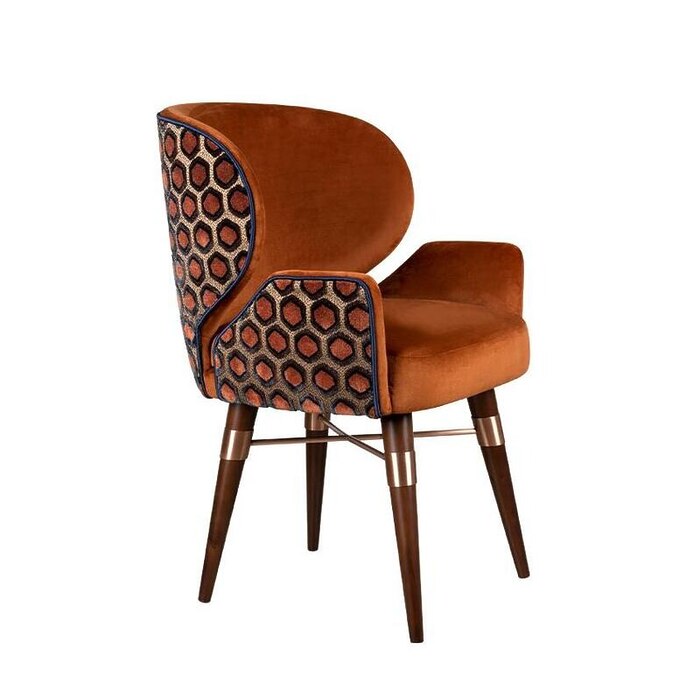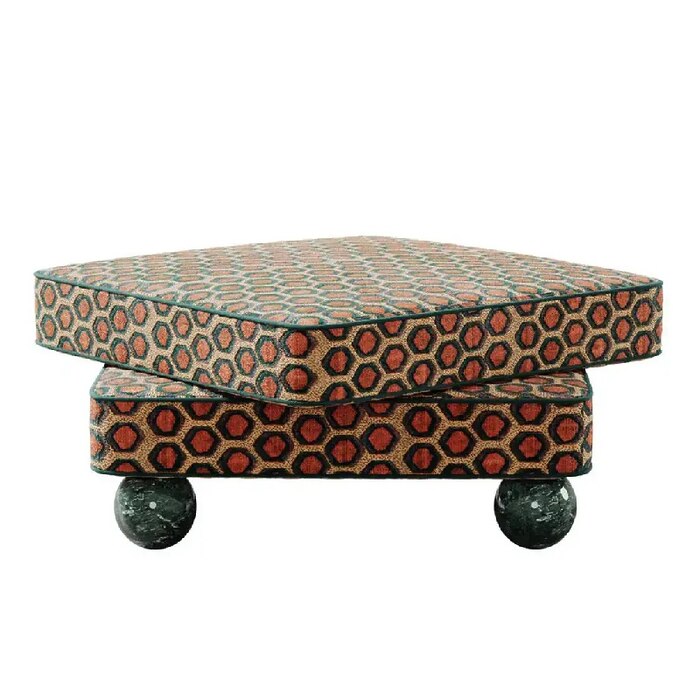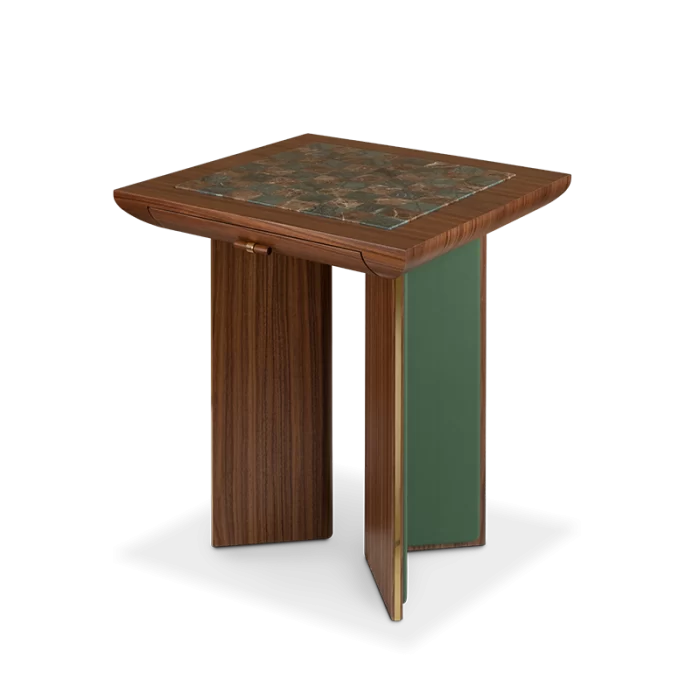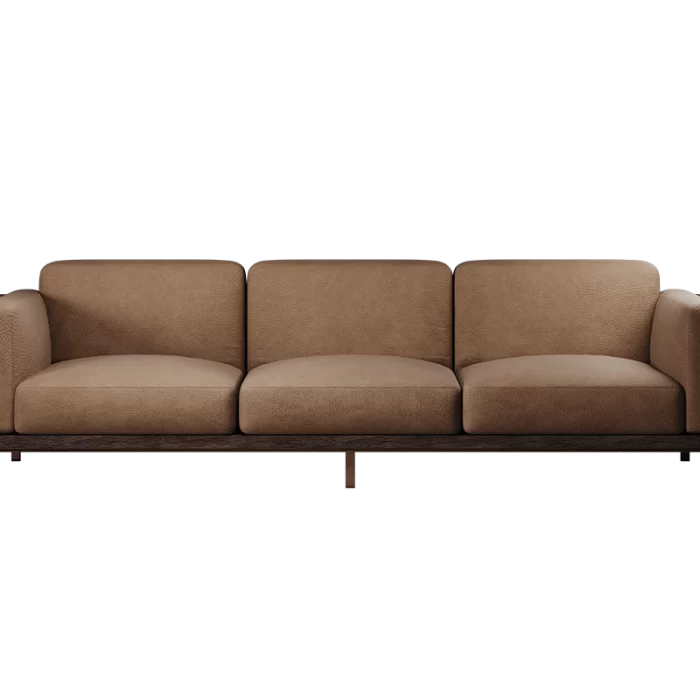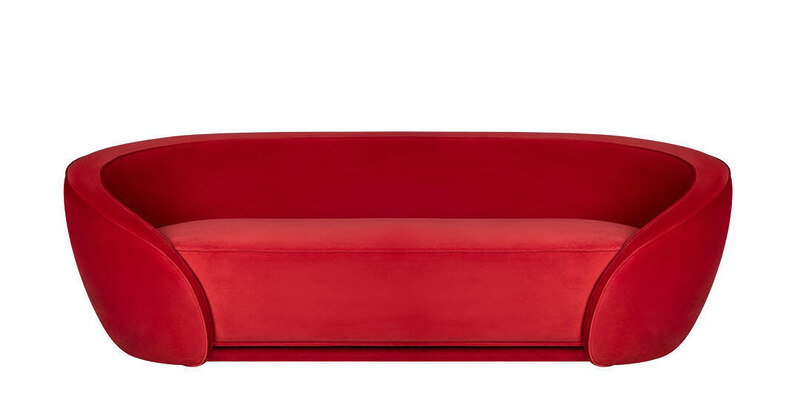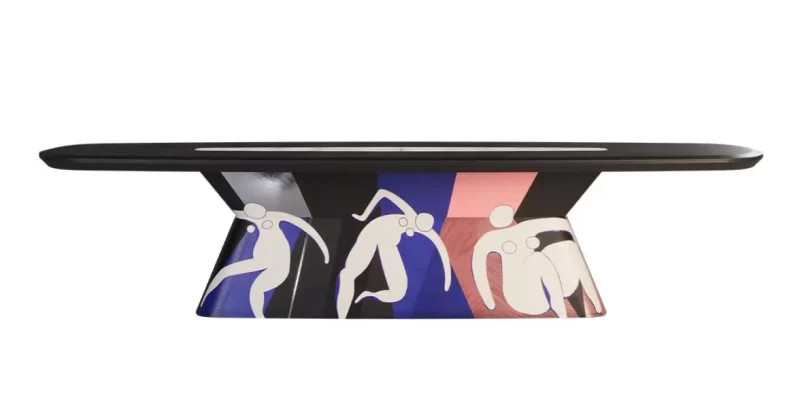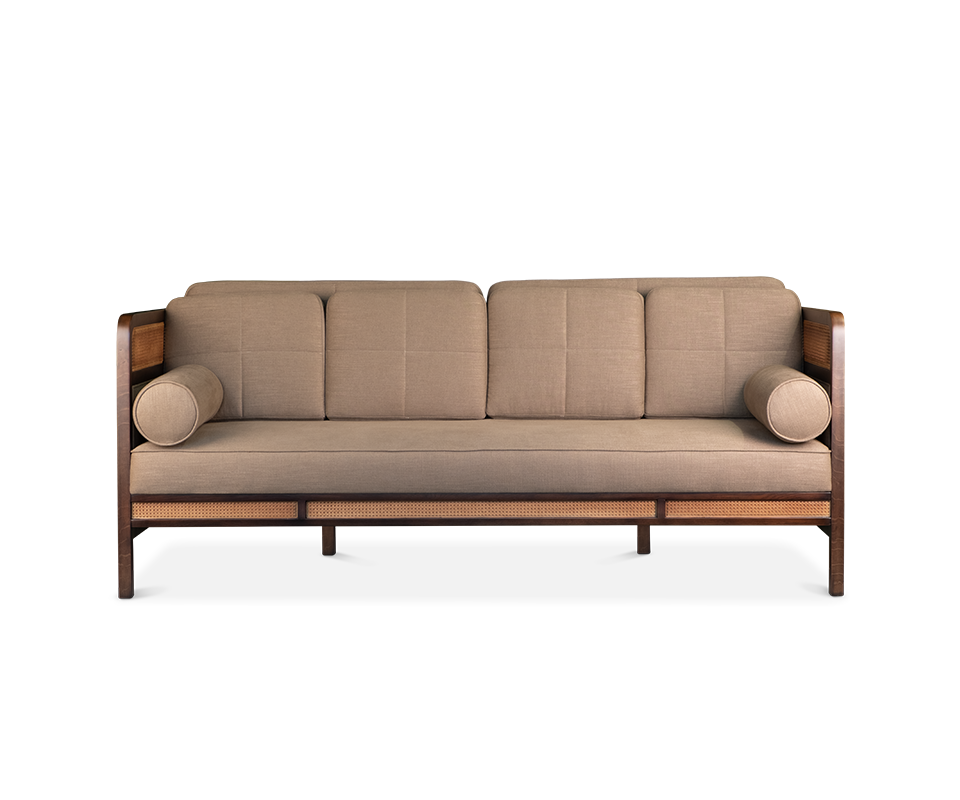Tag: Interior Designers
Most Iconic Interior Designers: David Hicks
David Hicks was a prominent English interior decorator and designer, renowned for his innovative approach to interior design during the 1960s and 1970s. Born in Essex, Hicks attended Charterhouse School and later the Central School of Arts and Crafts in London.
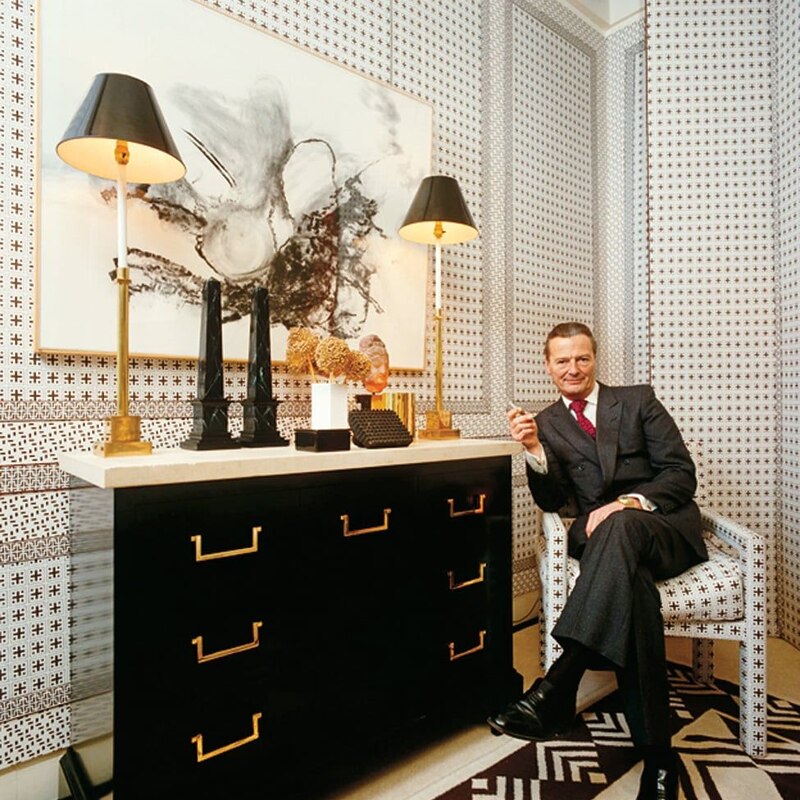
He began his design career in 1954 when House & Garden magazine featured his decoration of his mother’s London home. This exposure led to a flourishing career, with Hicks becoming one of London’s most sought-after designers. His style was characterized by the bold use of contrasting colors, geometric patterns and the eclectic mixing of antique and modern furnishings. Hicks’s clientele included royalty, aristocrats and celebrities, and his projects spanned private residences, hotels, restaurants and even product designs.
In his 1968 book, David Hicks on Living—With Taste, he stated, “My greatest contribution as an interior designer has been to show people how to use bold color mixtures, how to use patterned carpets, how to light rooms and how to mix old with new.” His legacy continues to influence interior design, with his work remaining a benchmark for creativity and boldness in the field.
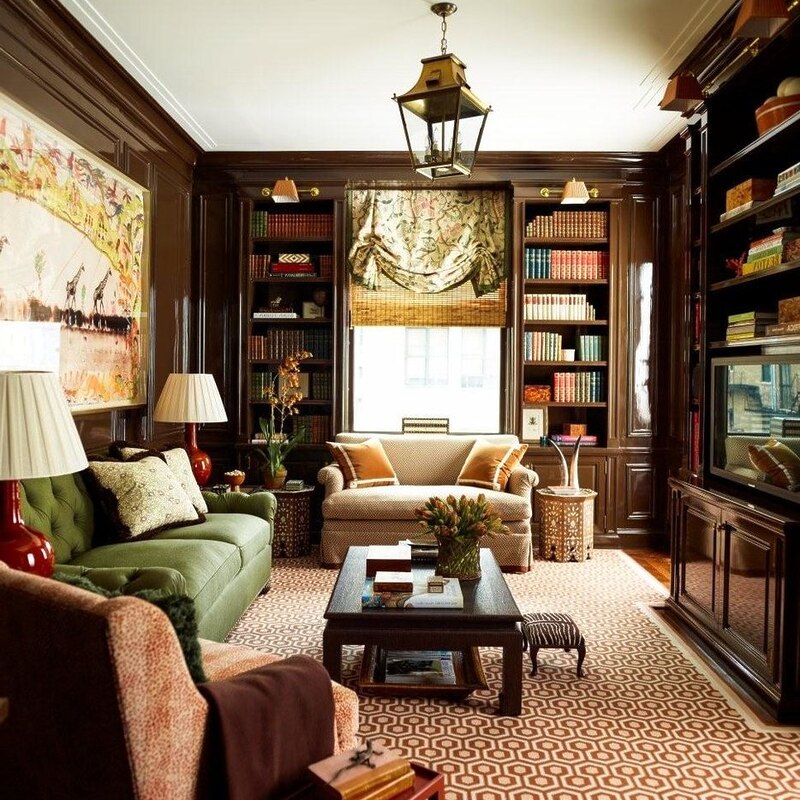
The Legacy of Bold Elegance
One of Hicks’s most significant contributions was his innovative approach to carpeting. In the early 1960s, he introduced vibrant, patterned carpets, including his iconic hexagonal design, which became a hallmark of his style. These designs gained prominence, adorning spaces like Windsor Castle and Buckingham Palace. His influence extended to popular culture, with his patterns featured in films such as Stanley Kubrick’s “The Shining” and Pixar’s “Toy Story.”
In fact, this inspired David Hicks’s daughter, Ashley Hicks, to create an eggplant-hued chain-link carpet for the London apartment she shares with her wife, Kata.
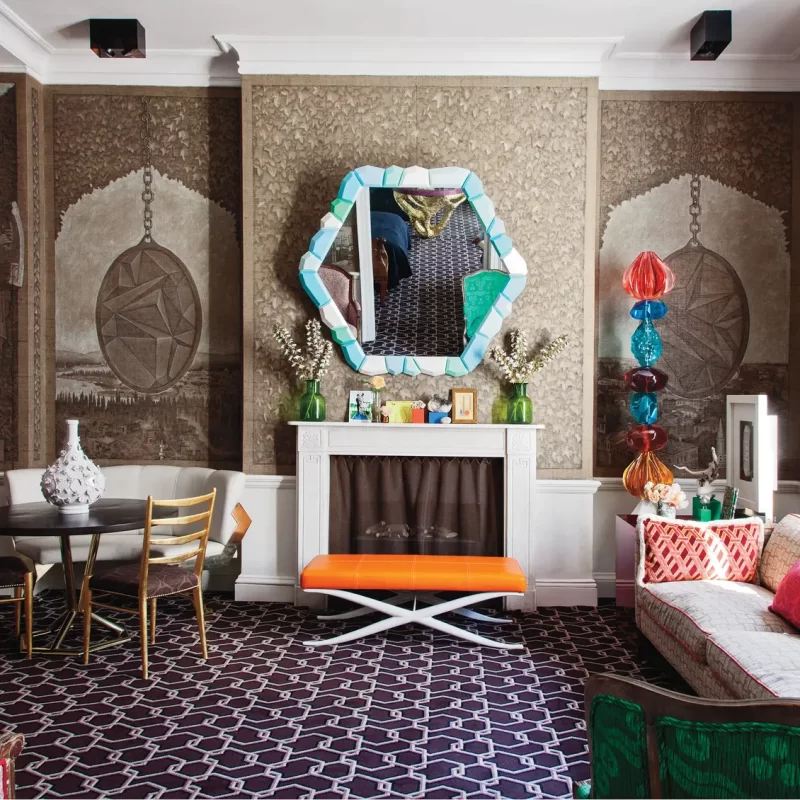
The Genius of David Hicks
Beyond interiors, Hicks’s impact was multifaceted. He ventured into designing fashion and jewelry collections, set designs for films and garden landscapes. His dedication to design excellence earned him numerous accolades, including induction into the Interior Design Hall of Fame. Hicks’s legacy continues through his writings and the enduring appeal of his design aesthetics, influencing designers and enthusiasts worldwide.
David Hicks’s Most Defining Projects
David Hicks’s most defining projects showcase his bold and innovative approach to interior design. At Baronscourt in Northern Ireland, he revitalized the historic estate with vibrant colors and modern furnishings, transforming traditional spaces into dynamic, contemporary environments.
In London, the Chelsea Drugstore, opened in 1968, embodied the spirit of the Swinging Sixties. Its sleek, modern design featured travertine and brushed steel, housing bars, a chemist and record stores across three floors. The venue became a cultural icon, even featuring in Stanley Kubrick’s film A Clockwork Orange.
Hicks’s work on the St. Regis Hotel Suites in New York brought British elegance and geometric precision to a cosmopolitan setting. His designs combined luxurious materials with bold color palettes, creating spaces that were both sophisticated and inviting.
Villa Verde in Portugal stands as one of Hicks’s most comprehensive projects. Commissioned by close friends Amin and Nahid Ghani, he oversaw every aspect – from selecting the site to designing the architecture, interiors, and landscaping. The villa showcases his signature style: a seamless mix of classic and modern elements, meticulous attention to detail and a cohesive aesthetic throughout.
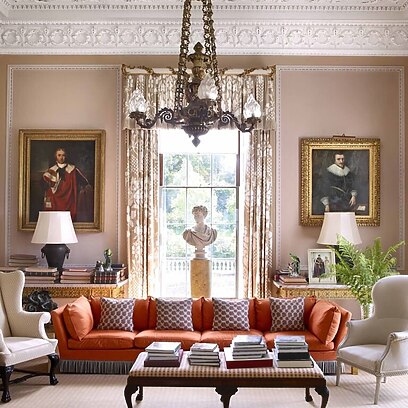

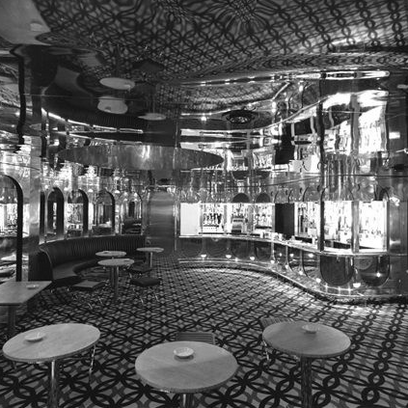
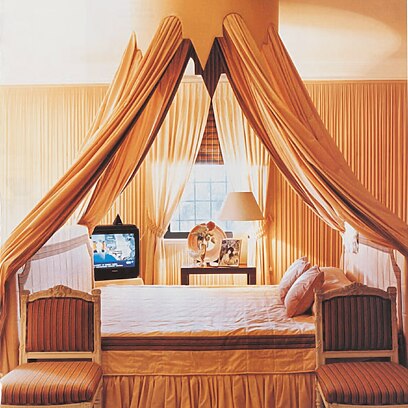
Matching the Style
And you? What do you think of David Hicks’s design style? Do you like it?
Stay tuned to our Journal for exclusive insights, expert advice and timeless elegance.
You might also like: Most Iconic Interior Designers: Jacques Grange
Most Iconic Interior Designers: Jacques Grange
Jacques Grange, born on June 27, 1944, in Saint-Amand-Montrond, France, is a distinguished French interior designer renowned for his ability to blend traditional elegance with contemporary flair. He began his formal education at the Lycée Gerson and Lycée Janson-de-Sailly, followed by studies at the École Boulle and École Camondo in Paris, institutions celebrated for their rigorous training in decorative arts.
In 1965, Grange joined the esteemed design firm of Henri Samuel, where he honed his craft before establishing his own practice in 1970. Throughout his illustrious career, he has curated interiors for a host of high-profile clients, including Yves Saint Laurent, Pierre Bergé, Princess Caroline of Monaco and Valentino. Notably, he decorated the Château Gabriel in Benerville-sur-Mer for Saint Laurent and Bergé, drawing inspiration from Proust’s “In Search of Lost Time.”
Grange’s design philosophy is characterized by an eclectic mix of periods and influences, seamlessly integrating antique and modern elements to create sophisticated and personalized spaces. His contributions to interior design have earned him numerous accolades, including the prestigious Chevalier de la Légion d’Honneur, reflecting his significant impact on the field.
Beyond his design work, Grange has influenced the industry through his mentorship under Henri Samuel and his ongoing commitment to excellence, inspiring both peers and emerging designers worldwide.
“Art doesn’t transform a space, but it magnifies it and gives it a rare flavor and style.”
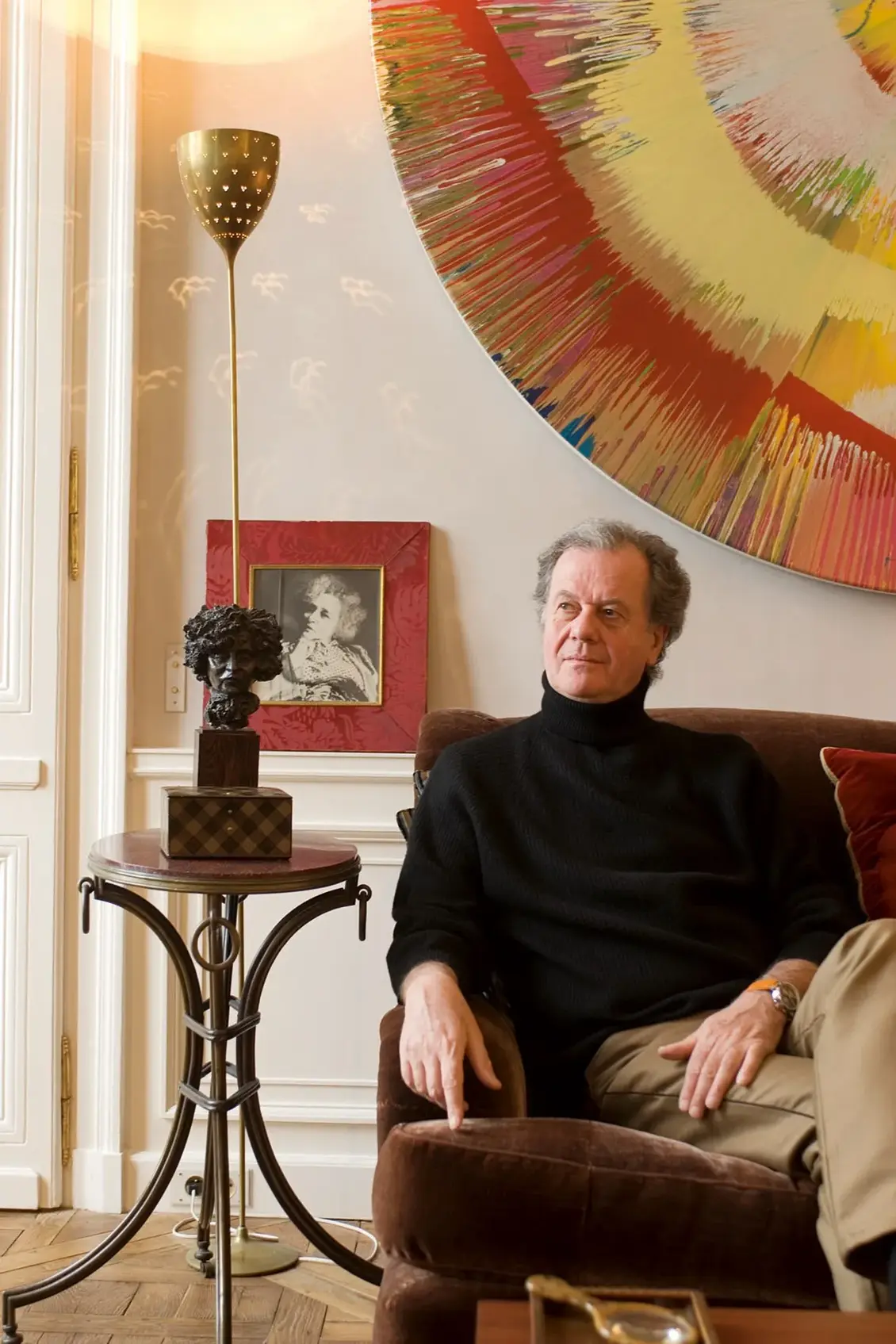
Mastering the Art of Creating Timeless and Sophisticated Interiors

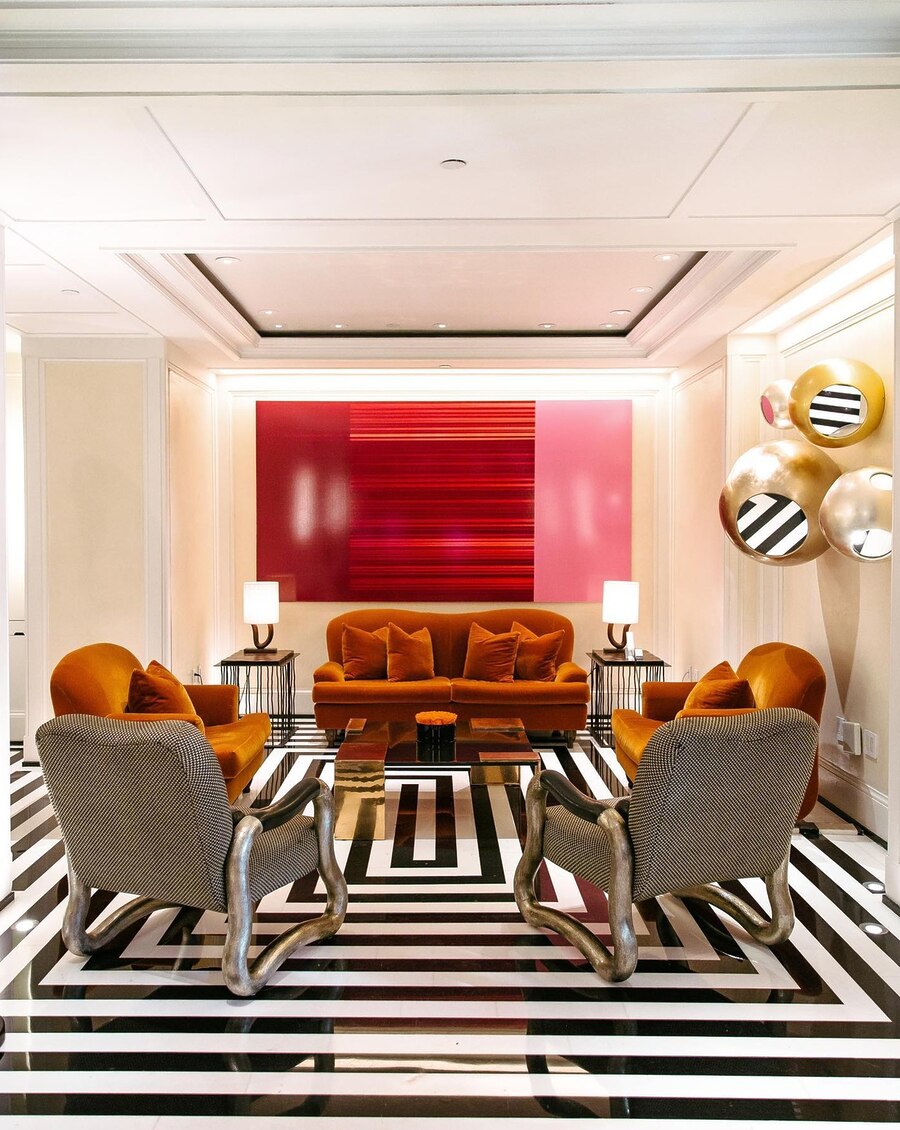
Jacques Grange has curated numerous residential projects that seamlessly blend traditional elegance with contemporary flair. Notably, he transformed Yves Saint Laurent and Pierre Bergé’s Château Gabriel in Benerville-sur-Mer, creating a luxurious and sophisticated retreat. In Manhattan, Grange designed Terry de Gunzburg’s residence, crafting a warm and refined environment that mirrors the owner’s lifestyle. Additionally, his own retreat, Casa Nina, comprises a series of cabanas nestled in Portugal’s Alentejo region, exemplifying his signature fusion of rustic charm and refined design. These projects highlight Grange’s adeptness at harmonizing classic and modern elements, resulting in unique and personalized interiors that cater to each client’s distinct vision.
In addition to his residential projects, Jacques Grange has significantly contributed to the design of prestigious commercial and hospitality establishments. Notably, he reimagined The Mark Hotel on Madison Avenue in New York City, blending modern luxury with timeless elegance. He also collaborated with Francis Ford Coppola to restore Palazzo Margherita in Bernalda, Italy, infusing the space with rich cultural elements and sophisticated design.
Top Projects by Jacques Grange
Paris Apartment
The apartment, a spacious and elegant residence with a traditional L-shaped layout, initially featured a classic floor plan. A long enfilade connected the main living spaces, preserving a sense of old-world charm and architectural continuity. Jacques Grange, however, brought his signature balance of heritage and modernity by completely reconfiguring the shorter wing of the “L.” This is where he introduced a sleek, contemporary kitchen and a modern bathroom – two spaces that now contrast beautifully with the more classical elements of the home.
Grange approached the project with a deeply personal touch, designing it for a friend and shaping every detail through close dialogue. “We spoke about everything, and where to put each piece,” he notes. The result is a warm, layered interior that blends vintage character with modern comfort, creating a space that feels both timeless and alive. As Grange reflects on the experience, he emphasizes the mutual exchange that defined the process: “We taught each other things. I am not interested in just sitting quietly with my own old thoughts. I learned too.”
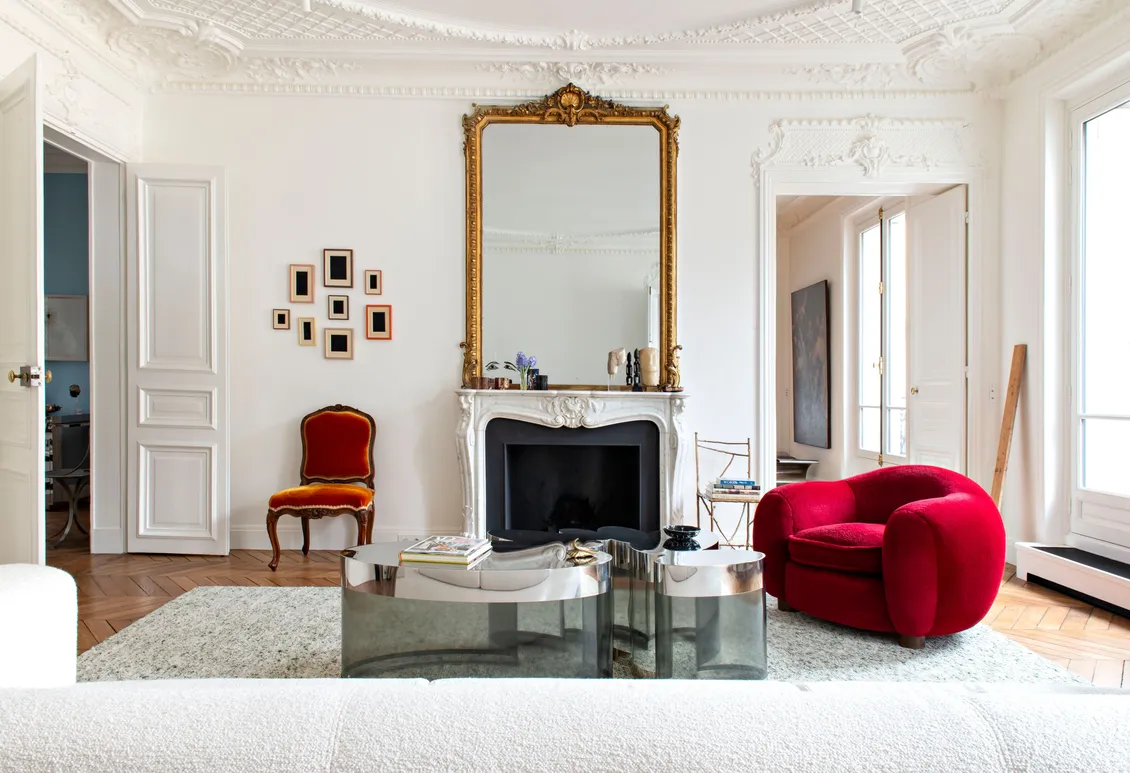
Mesmerizing Paris Mansion
Jacques Grange transformed a 19th-century hôtel particulier in Paris, blending historical grandeur with contemporary elegance. The mansion, built between 1870 and 1872, boasts expansive windows overlooking the Seine River and the Musée du Louvre. Grange’s design harmoniously combines opulent fabrics, custom-designed carpets, and innovative room transformations, resulting in a luxurious and art-filled residence.
One of the most striking features is the minimalist swimming pool in the basement, illuminated by atmospheric lighting designed by artist James Turrell. This addition provides a serene and otherworldly complement to the mansion’s historic architecture.
Grange’s meticulous restoration and design work exemplify a masterful blend of past and present, creating a mesmerizing Parisian mansion that honors its rich history while embracing modern luxury.

Style Match
Romy Sofa
Christian Louboutin’s Penthouse
Jacques Grange designed his longtime friend Christian Louboutin’s Paris penthouse as a testament to the fusion of luxury and personal expression. Situated with views of the Eiffel Tower, the apartment showcases Louboutin’s penchant for vibrant colors and eclectic art. Grange’s design features ample spaces for entertaining, with a loft-like living area adorned with vintage furniture and custom-designed elements inspired by Louboutin’s observations, such as skylights reminiscent of metal cat flaps he noticed across the street. The bedroom, intentionally designed without a guest room, reflects Louboutin’s candidness about his lifestyle, with over 50 pairs of shoes casually arranged on the floor.
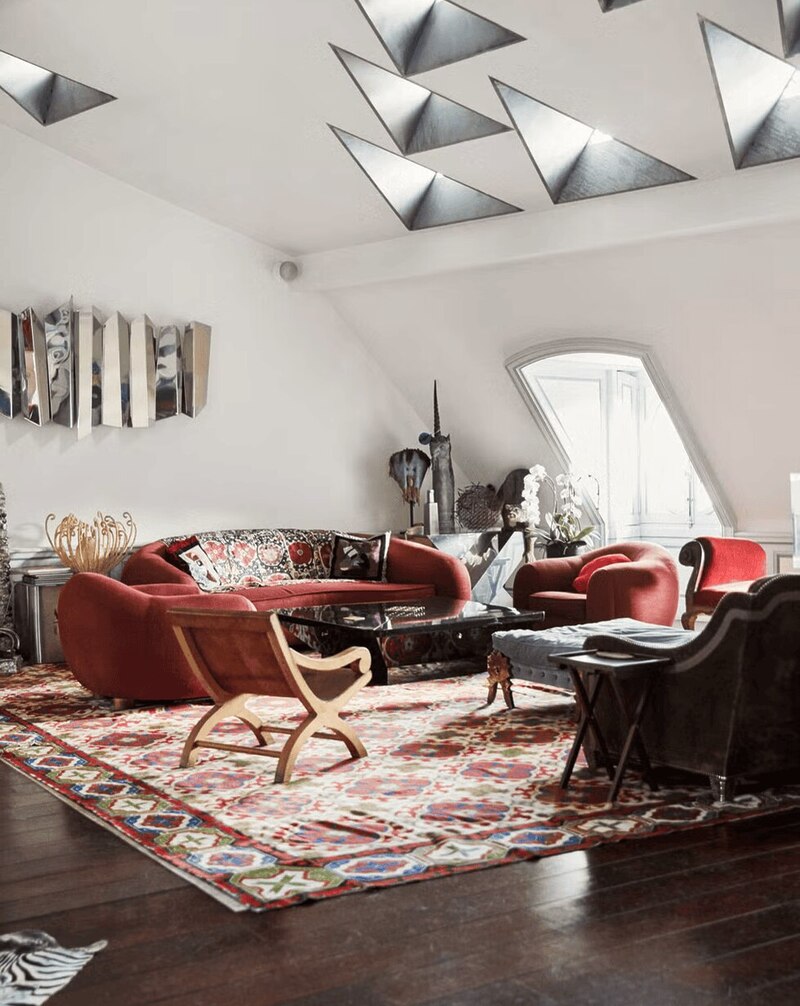
Pierre Passebon’s Apartment
Jacques Grange collaborated with his partner Pierre Passebon to transform Passebon’s 1820s Directoire apartment in Paris into a harmonious blend of history and modernity. Grange reimagined the space by removing interior walls to create an open, fluid layout that showcases a curated mix of modernist furniture, antique pieces and contemporary art. Notable features include a custom-designed quilted sofa by Grange, a striking 16th-century Italian marble fireplace, and vibrant artworks like Gino Marotta’s Amore Mio. The apartment reflects Grange’s signature style—merging diverse eras and cultures into a cohesive, elegant environment that balances eclecticism with refined taste.
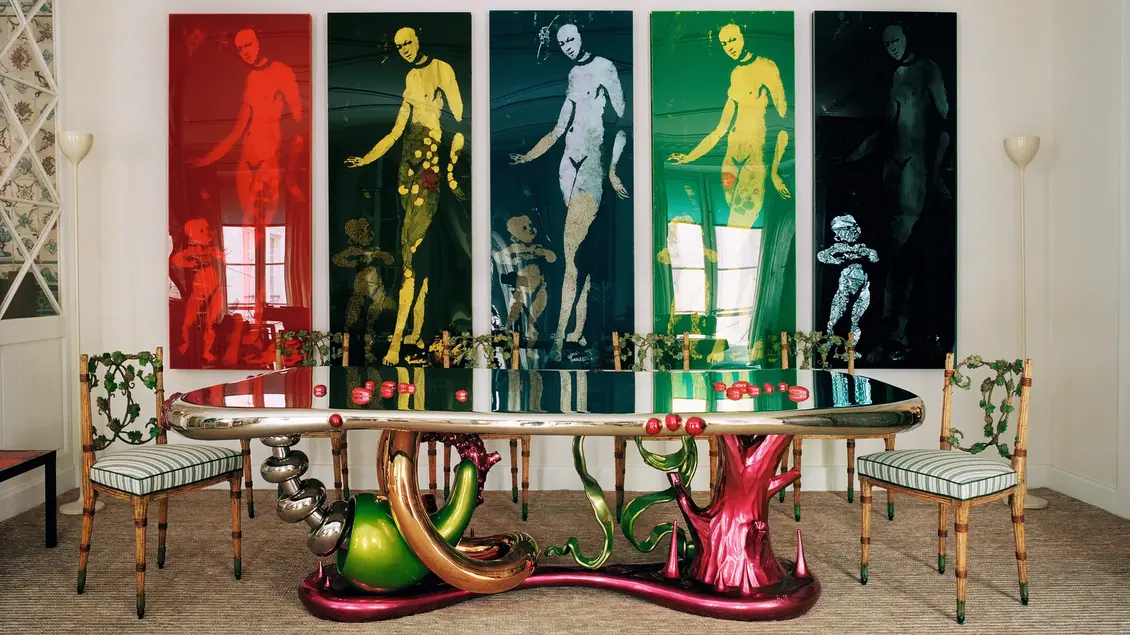
Style Match
La Danse Dining Table
“Grange’s decor cannot be explained; it is the Grange style.”
Pierre Passebon
In recognition of his outstanding contributions to interior design, Grange was honored with the title of Chevalier des Arts et des Lettres and Chevalier de la Légion d’Honneur. Furthermore, in 2014, he received the Trophée des Arts from the French Institute Alliance Française (FIAF) during their annual gala at New York City’s Plaza Hotel.
And you? What do you think of Jacques Grange’s style? We’d love to hear your thoughts!
Stay tuned to our Journal for exclusive insights, expert advice, and timeless elegance.
You might also like: Most Iconic Interior Designers: Elsie de Wolfe
Most Iconic Interior Designers: Elsie de Wolfe
“I’m going to make everything around me beautiful – that will be my life”
Elsie de Wolfe, also known as Lady Mendl, was born in 1865 in New York and led a glamorous life as a prominent figure in European café society. Often referred to as the “grand dame of modern decorating,” she is widely credited with pioneering the profession of interior design and is considered by many to be the first modern professional decorator.
Her career began in the theater under the guidance of theatrical agent Elisabeth Marbury. Though her acting received modest attention, it was her impeccable fashion sense that captured the public’s eye. Women admired her carefully curated outfits and began to emulate her style, establishing de Wolfe as a fashion icon of her era. In fact, she was named the “best-dressed woman in the world” in 1935.
But who exactly was Elsie de Wolfe, and what lasting impact did she leave on the world of interior design?
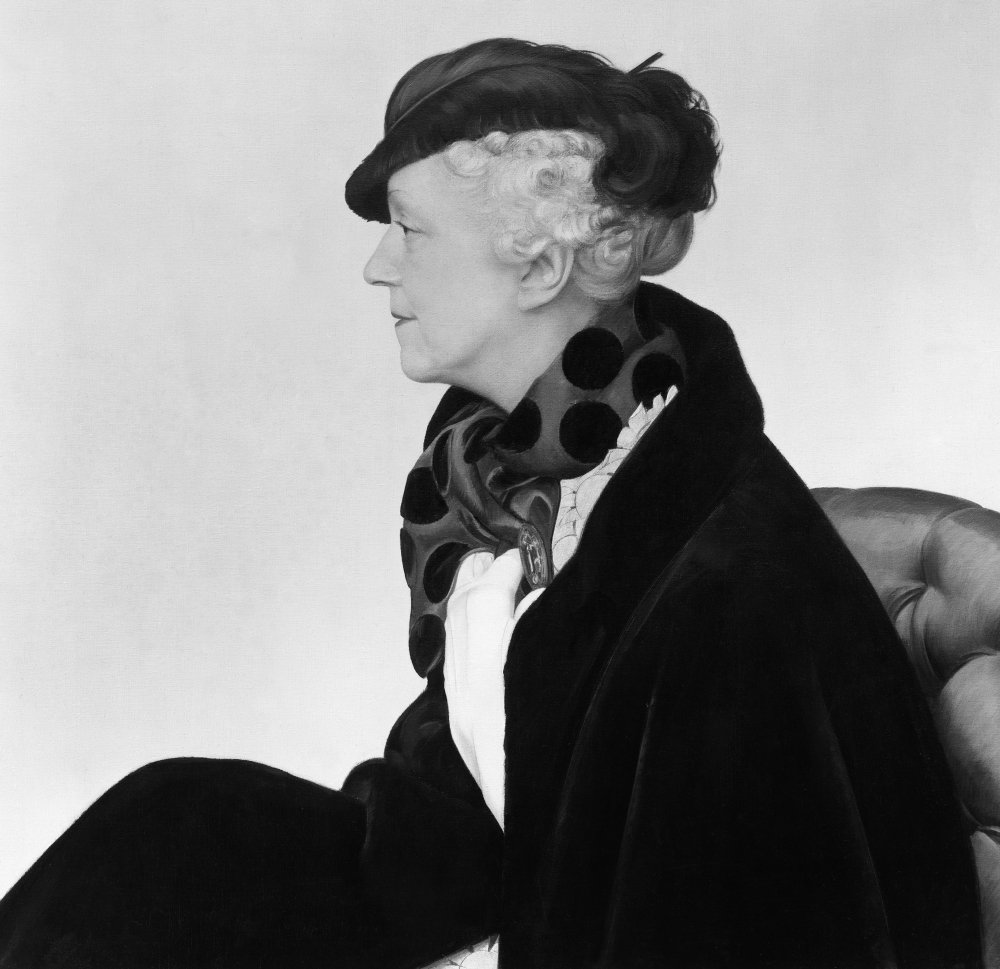
Elsie de Wolfe: The Woman Who Invented Interior Design
Known and revered as America’s first decorator, Elsie de Wolfe changed the course of interior design forever. Her influence is still felt today — in every bright, airy and feminine space that rejects heavy drapes and dark furniture. Even decades after her passing, her legacy lives on through the casual elegance she championed.
Elsie once described herself as a “rebel in an ugly world”. At a time when late Victorian interiors were weighed down with clutter and gloom, she brought in simplicity, comfort and light. Mirrors, chinoiserie, soft color palettes and whimsical flourishes became her signature. She believed in “plenty of optimism and white paint, comfortable chairs with lights beside them, open fires on the hearth and flowers wherever they belong, mirrors and sunshine in all rooms”.
In 1913, she published The House in Good Taste, a guide to decorating that became an instant hit and remains a design classic today. De Wolfe was the one who proved that pale color schemes, painted woodwork and floral chintz could be not only stylish but timeless. She introduced the use of painted trellis as wallcovering, animal-print carpets and mirrored walls — elements still used by designers around the world.
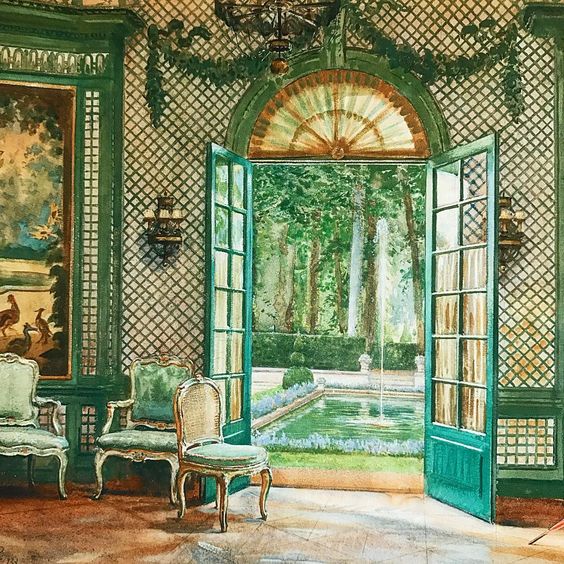
Elsie De Wolfe’s Career
In 1887, de Wolfe formed a partnership with Elisabeth “Bessie” Marbury, a prominent literary agent. Together, they transformed their shared residence on Irving Place by replacing the dark, heavy furnishings typical of the Victorian era with lighter, more inviting decor. This successful endeavor inspired de Wolfe to pursue interior decoration professionally. In 1905, she secured her first major commission to design the interiors of the Colony Club, New York’s inaugural social club for women, with the support of architect Stanford White and her influential social circle.
The triumph of the Colony Club project catapulted de Wolfe into high demand among affluent clients, including notable figures such as industrialist Henry Clay Frick. By 1913, her burgeoning reputation enabled her to establish a substantial studio on Fifth Avenue. De Wolfe’s design philosophy emphasized simplicity and suitability, advocating for interiors that were both elegant and comfortable. She favored light fabrics, pale color schemes, and practical furnishings, often incorporating mirrors to enhance natural light and create a sense of spaciousness. Her work not only revolutionized interior aesthetics but also laid the foundation for interior decoration as a recognized profession.
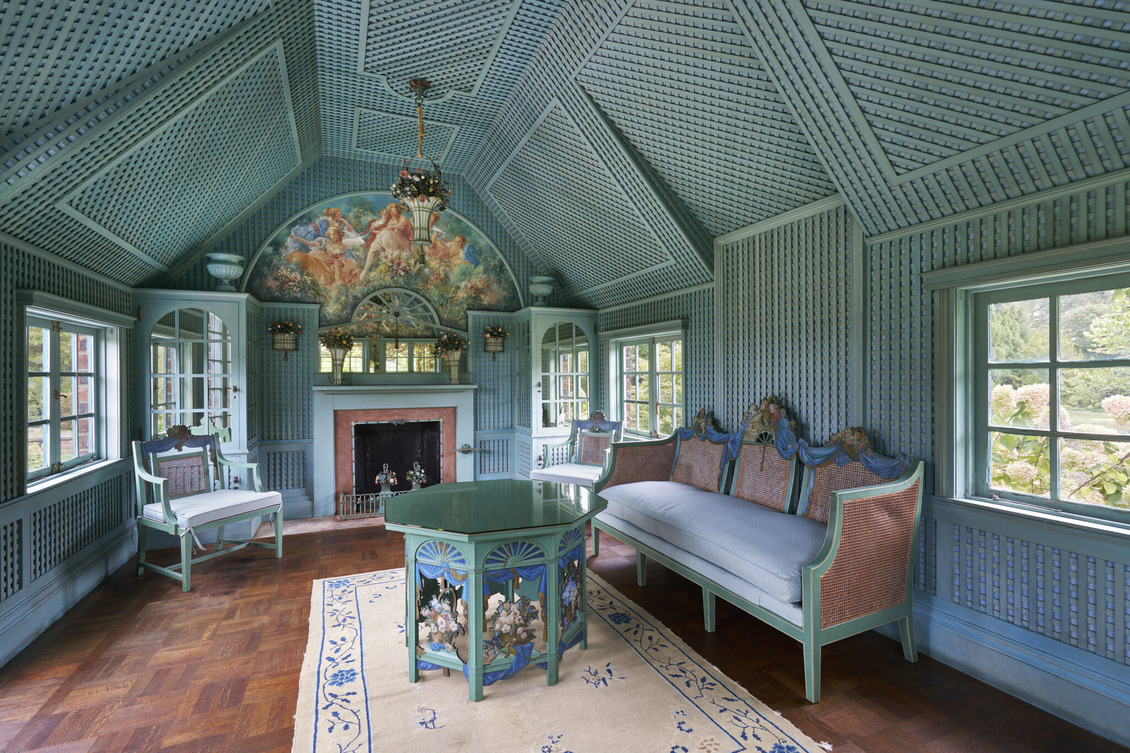
Hollywood’s Favourite Designer
Fleeing Paris ahead of World War II, Elsie de Wolfe settled in Los Angeles, where her refined and airy aesthetic captivated the film industry’s elite. Her clientele included notable figures such as Countess Dorothy di Frasso, for whom she designed a Beverly Hills villa. De Wolfe’s influence extended beyond private residences; she also served as a set decoration adviser for films like “The Razor’s Edge,” further cementing her status as Hollywood’s go–to designer during its golden age.
Notable clients: The Colony Club, Hope Hampton, Anne Vanderbilt, the Duchess of Windsor, Condé Nast.

Elsie de Wolfe’s Most Famous Designs
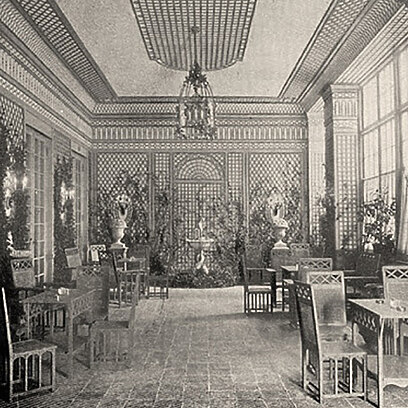

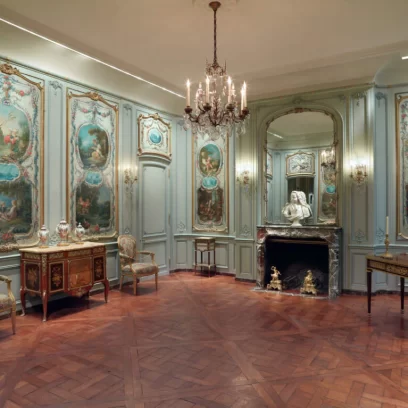

You May Also Like
And you? What do you think of Elsie de Wolfe’s design style? Do you like it?
Stay tuned to our Journal for exclusive insights, expert advice and timeless elegance.
You might also like: Rustic Canyon Residence: A Tribute to Richard Neutra Design

